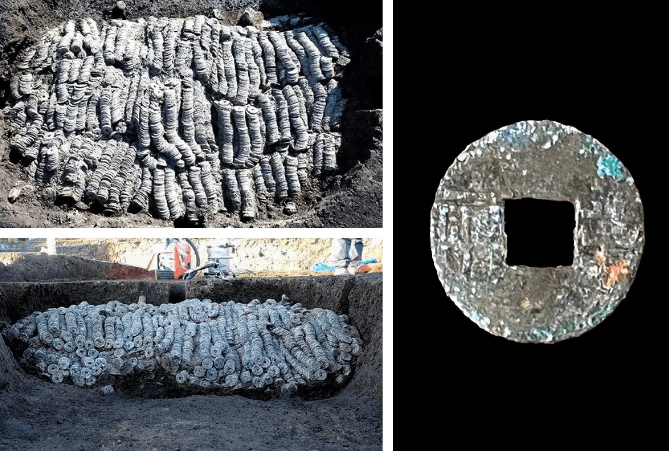In a remarkable discovery that has captivated historians and archaeologists alike, a treasure trove of over 100,000 ancient coins was recently uncovered at a construction site in Maebashi City, Japan. This find is one of the largest coin discoveries ever recorded in the country and provides a fascinating glimpse into Japan’s rich historical tapestry. As the excavation continues, the significance of these coins sheds light on the country’s past, particularly during the Kamakura Period.
A Remarkable Discovery
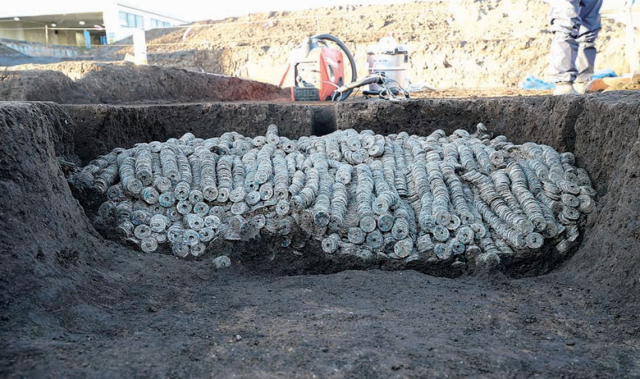
The discovery took place in Maebashi City, located approximately 70 miles northwest of Tokyo. As construction workers dug into the earth, they unearthed a massive cache of tarnished coins buried just inches below the surface. The coins were found in neatly stacked bundles, with remnants of rice straw mats at the bottom of the pit, suggesting that they were carefully stored before being buried.
Coins from Across the Ages
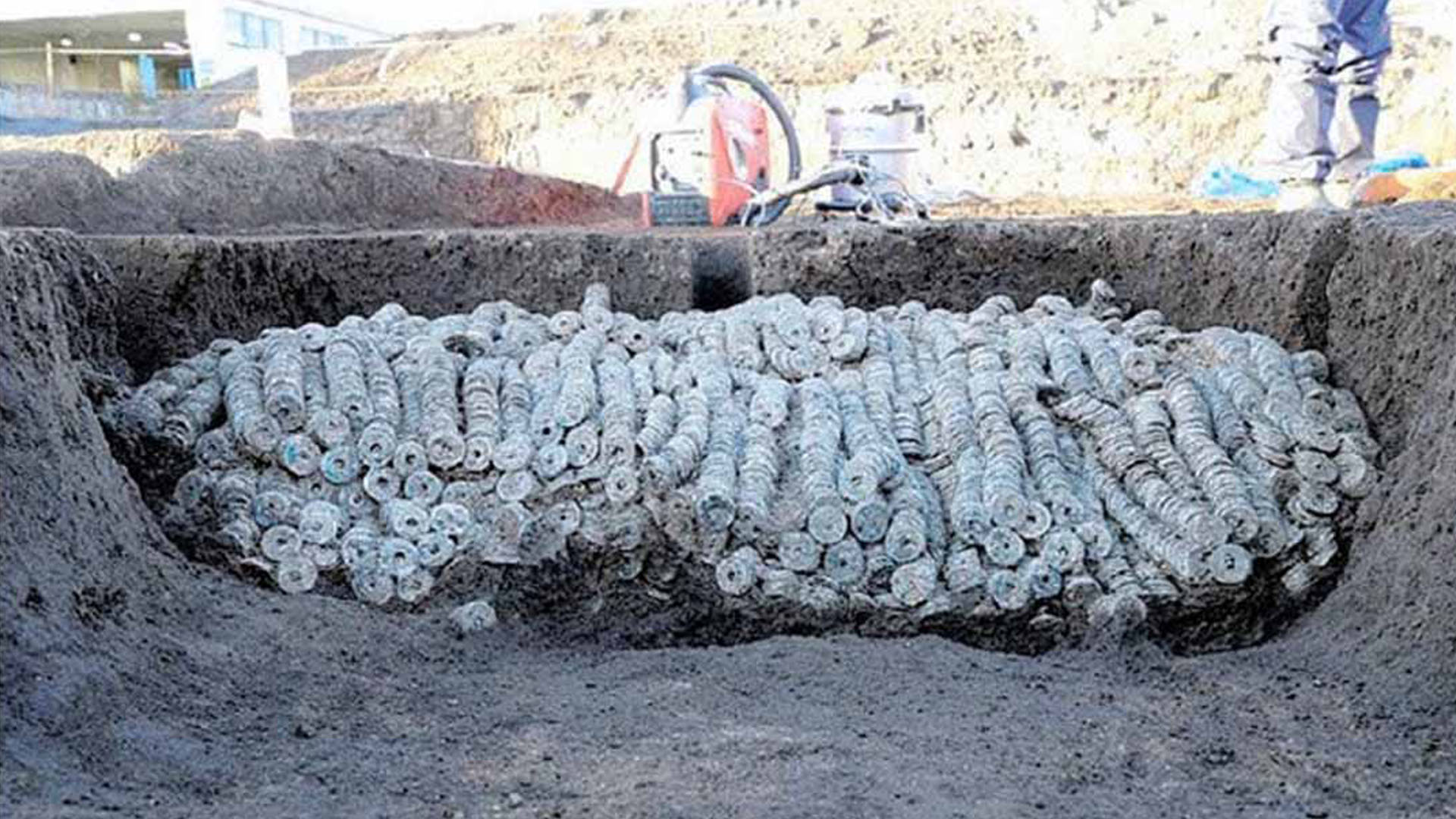
Among the coins, officials identified pieces from various periods, including some from China. The oldest coin, dating back to 175 B.C., was minted during the Western Han Dynasty in China. This coin, which features a square hole and several distinct markings, is one of the earliest examples of currency from unified China. The newest coin in the collection was minted in 1265 A.D., suggesting that the treasure was likely buried during Japan’s Kamakura Period, which spanned from 1185 A.D. to 1333 A.D.
The Kamakura Period: A Time of Transformation
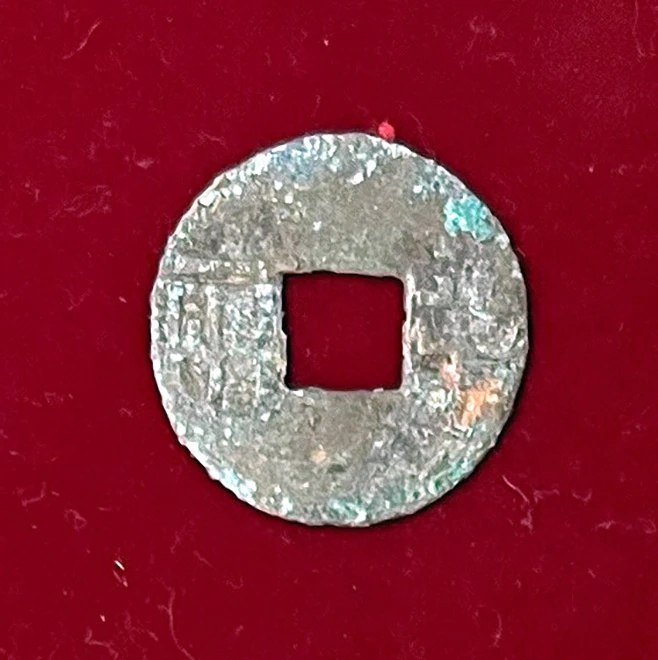
The Kamakura Period was a pivotal era in Japanese history, marked by significant political changes. During this time, the military, led by the shogunate, gradually took control from the nobility, leading to a shift in power dynamics within the country. The discovery of this large coin collection, hidden away for safekeeping, likely reflects the turbulent nature of this period, where the anticipation of war and political unrest may have prompted someone to bury their wealth.
A Rare Find with Growing Significance
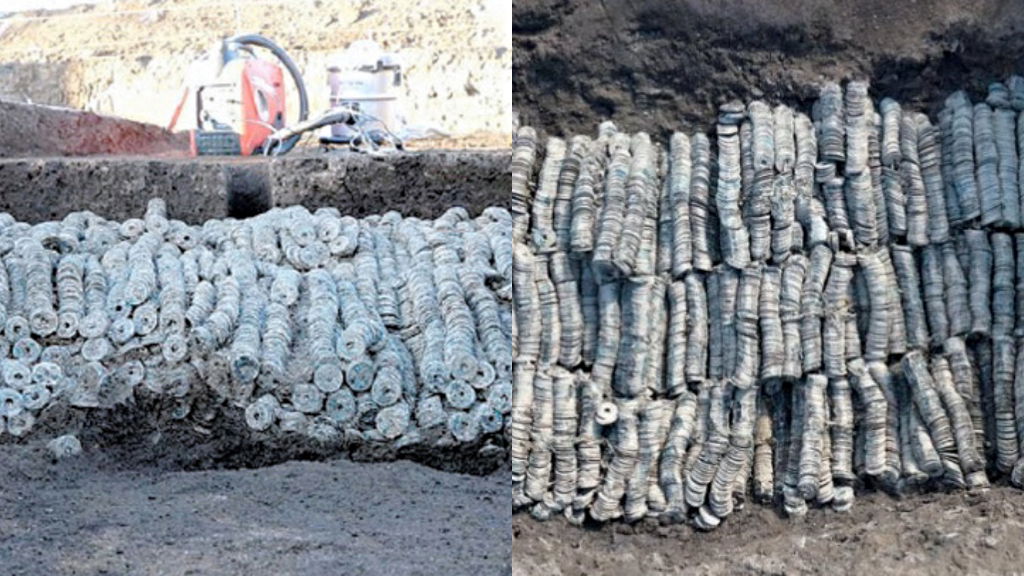
While discoveries of coin troves of this magnitude are rare, Japan has seen an increase in the number of old coins unearthed at archaeological sites in recent years. This surge in findings suggests that there is still much to learn about the country’s historical periods through the lens of currency. The Maebashi coin trove, with its vast assortment of coins spanning centuries, offers valuable insights into the economic and political landscapes of Japan’s past.
Conclusion
The unearthing of over 100,000 ancient coins in Maebashi City stands as a monumental discovery in Japanese archaeology. These coins not only serve as a testament to the historical richness of the Kamakura Period but also highlight the intricate connections between Japan and other regions, such as China, through trade and cultural exchange. As experts continue to study this treasure trove, it will undoubtedly enhance our understanding of Japan’s past, providing a tangible link to the lives and times of those who lived centuries ago.
